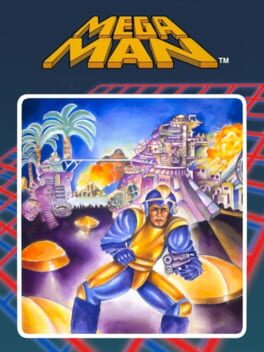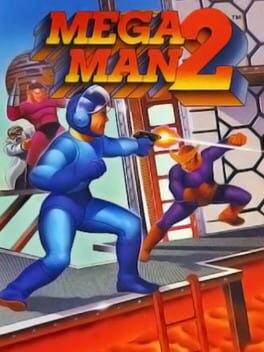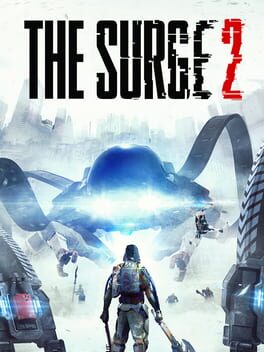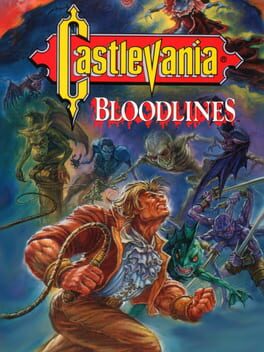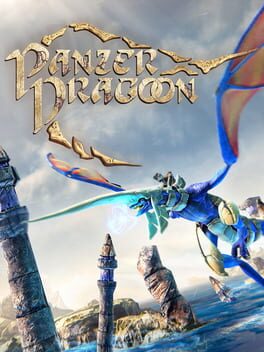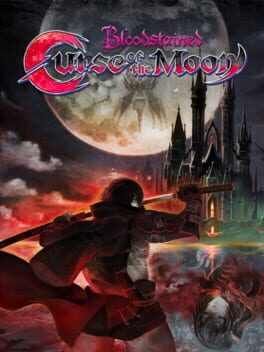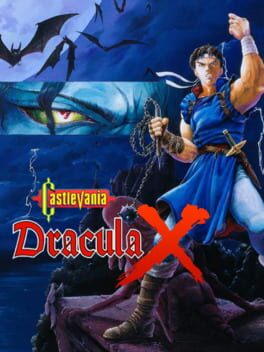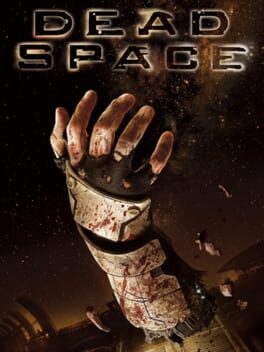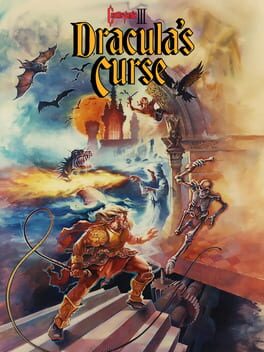ogremode
2022
1987
1989
2019
Really solid Souls-like--in fact, probably my favorite of these not made by FromSoftware. Its strength is its level design and enemy placement--the world is essentially four or five Dark Souls style levels where you unlock shortcuts from a single "bonfire," but they're all somewhat large. You rarely feel the danger of "am I going to find the next shortcut/bonfire" that Dark Souls 1 and Bloodborne is really good at evoking; each piece along the way is manageable, and you can challenge yourself not to reset the level as you unlock the shortcut paths. Finding out how the levels fit together (and the various ways you can travel between the different levels) is always satisfying. There is some light Metroid elements as well--you unlock abilities as the game goes on that you can use to unlock more of the level. Besides the required segments of this stuff, going back to explore wasn't always rewarding: some techno-souls points, maybe a weapon or two, or an audio log. I blazed through the main quest without paying too much attention to the side stuff.
The health system sets it apart from other Souls-likes. You choose when to refill your own "flask" by burning "energy" which is a kind of mana bar that refills as you land hits on enemies, which means you can comfortably enter an encounter with zero flasks and come out of it with your flask charges topped off, so long as you're aggressive.
I played this game heavily relying on the directional parries, as opposed to dodging. The parry system can almost be spammed on certain enemy types, but it feels good to feel out the exact timing. The bosses are all pretty easy, especially when using parries, but they're all a lot of fun to fight. I ended up using a codename staff weapon and an angel set build, which essentially increases attack speed, energy gain, and stagger damage when using a "codename" weapon (weapons that begin with the word "codename"). There's some lore reason for that, but I didn't care about the story or world here whatsoever. It's all cool looking enough and can be very goofy. I'm not completely sure if I'm going to do the NG+ yet--if I do, it will purely be for the mechanical pleasure of it since I was never grabbed by the world or story. I'm more inclined to check out the first one.
The health system sets it apart from other Souls-likes. You choose when to refill your own "flask" by burning "energy" which is a kind of mana bar that refills as you land hits on enemies, which means you can comfortably enter an encounter with zero flasks and come out of it with your flask charges topped off, so long as you're aggressive.
I played this game heavily relying on the directional parries, as opposed to dodging. The parry system can almost be spammed on certain enemy types, but it feels good to feel out the exact timing. The bosses are all pretty easy, especially when using parries, but they're all a lot of fun to fight. I ended up using a codename staff weapon and an angel set build, which essentially increases attack speed, energy gain, and stagger damage when using a "codename" weapon (weapons that begin with the word "codename"). There's some lore reason for that, but I didn't care about the story or world here whatsoever. It's all cool looking enough and can be very goofy. I'm not completely sure if I'm going to do the NG+ yet--if I do, it will purely be for the mechanical pleasure of it since I was never grabbed by the world or story. I'm more inclined to check out the first one.
Buddy Eric run. A lot of fun especially after I figured out you can use his spear hop tactically. Don’t really like the faces/column boss (is it supposed to be a reference to the face/vase optical illusion?), not sure when the hit box is open. Everything else is pure gravy. Love the clockwork boss and the Pokey boss.
1986
Pretty good remix of a lot of ideas from earlier Castlevanias: the character switching, the branching paths, the NES style of the original. OK levels, but some of the characters trivialize certain segments: The Alucard rip off’s special ability lets you fly over any obstacles, the wizard lets you make yourself invincible to enemies etc. There’s some weirdness to the difficulty. It never feels quite right, always either trivial or annoyingly hard. The normal difficulty settings give you 3 continues and enable knockback when you get hit; the casual difficulty gives infinite continues, while disabling knockback. I would have liked more specific settings, or a third option of infinite continues and knockback.
I don’t love the bosses. They aren’t all very fun to learn, and their design really sticks out. They have a more detailed, anime quality to them which I don’t mind on it’s own, but they’re jarring against the more NES looking characters, enemies, and backgrounds.
It gave me with enough good feelings to check out the sequel; hopefully there are a few improvements. There’s some fun to be had here, but you’d have more fun playing Castlevania: Bloodlines.
I don’t love the bosses. They aren’t all very fun to learn, and their design really sticks out. They have a more detailed, anime quality to them which I don’t mind on it’s own, but they’re jarring against the more NES looking characters, enemies, and backgrounds.
It gave me with enough good feelings to check out the sequel; hopefully there are a few improvements. There’s some fun to be had here, but you’d have more fun playing Castlevania: Bloodlines.
1991
An SNES upgrade of the original Castlevania with more movement and attack abilities. The former feels particularly necessary, kind of like the plunging attack in Dark Souls—you don't realize how much you miss it, and you're in for a really rude awakening playing the original and discovering you can't land a jump on stairs, which is like muscle memory for me at this point, or in Demons Souls finding yourself in the middle of a group of enemies you thought you had the literal jump on. The whip spinning is really useful for certain enemies, and it's just fun to whip that thing around, but it doesn't feel exactly as necessary as the multi-directional whip attack.
I tend to prefer the simpler Castlevania games, so I had a blast with this one. No character switching, no back tracking. Just pressing right to watch megachad Simon amble towards Dracula's castle like Michael Myers with a whip. It's challenging, and some of the difficulty can feel like bullshit. But I have no qualms about using save states to alleviate this.
I really liked the soundtrack of this one, particularly 7-1 and 8-1 (so chill), and how during the Dracula fight it switches from the tense Carpenterian synth to Simon's theme when the Count is on his last legs.
I tend to prefer the simpler Castlevania games, so I had a blast with this one. No character switching, no back tracking. Just pressing right to watch megachad Simon amble towards Dracula's castle like Michael Myers with a whip. It's challenging, and some of the difficulty can feel like bullshit. But I have no qualms about using save states to alleviate this.
I really liked the soundtrack of this one, particularly 7-1 and 8-1 (so chill), and how during the Dracula fight it switches from the tense Carpenterian synth to Simon's theme when the Count is on his last legs.
This SNES version of Rondo of Blood isn't a completely bad Castlevania game, but it comes off limited in comparison. Controls wise it's a step back from Super Castlevania IV—you only have the horizontal whip attack, though you can backflip which is very fun to pull off in spotty situations. There's no whip swinging, no diagonal or vertical whip attacks, no alternate paths, and the levels are basic and not as well-designed as usual. It feels like there's an overuse of the Spear Guard—maybe I just don't know how to fight them, but Richter's reach is too short and his animation is too slow to get a hit in and get out without getting hit. Often when climbing stairs an enemy will stand at the end, and without a diagonal whip attack there's nothing to do but walk up the stairs to take damage; it especially sticks out compared to the earlier games because while they can be difficult and unfair, they usually aren't this cheap. This is all compounded by the fact that some enemies take a lot more damage than usual to kill them—in the best scenario, it feels like you're having a duel with a Sword Lord or Axe Knight, but it can also feel tedious and unfair when you're dealing with platforming or Bats/Medusa Head at the same time. Still, I'm a sucker for the basic Castlevania experience so I mostly had a good with the levels.
The bosses at the end of the levels are mostly pretty good versions of them. The exception is the Count himself, who is here in his most annoying version. It's the typical dodge projectile + attack head thing, but rather than a regular arena, the level is a set of pillars floating at various heights, and Dracula teleports to a random one before each attack. This makes jumping just right to dodge and hit his head very difficult—the timing is a lot more precise than usual. You can't simply jump over the projectile then attack because Richter doesn't have that much height and speed to jump from a lower place when Dracula attacks. You can't attack the projectile then jump and attack because you typically would need to jump to hit the projectile; once Richter lands, you don't have enough time to jump again and hit Dracula's head before the window closes. Dracula will also throw an energy ball, which can only be dodged by jumping or backflipping over it, depending on the height of the attack, or by getting to the lowest pillar and crouching so it glides right over you. On top of all this Richter has a momentum and weight to his jumps, and you cannot guide Richter after you've already hit the jump button, so it is extremely easy to fall to your death, or land your jump on the pillar only to slide to your death. It's very frustrating, but with rewind + save states it just becomes very tedious. The second phase where Dracula goes demon mode is a lot easier. His projectiles have an easier timing and placement so you can often take out the projectiles and get damage in at the same time, and you can jump through or crouch to dodge his wind hoop attack.
The best part of the game, besides timing a backflip perfectly, is the way it looks. It's more artistic/anime looking than the blocky classic style of Rondo of Blood, and actually looks a little slicker to me than Symphony of the Night; it's much closer to the GBA games that Dracula X is now packaged with. The music is good too, though nothing stuck out for me.
Altogether this is an unfortunately middling game that makes me appreciate Super Castlevania IV and Castlevania: Bloodlines even more. Until Konami releases a Rondo collection on something besides PlayStation, this will have to do.
The bosses at the end of the levels are mostly pretty good versions of them. The exception is the Count himself, who is here in his most annoying version. It's the typical dodge projectile + attack head thing, but rather than a regular arena, the level is a set of pillars floating at various heights, and Dracula teleports to a random one before each attack. This makes jumping just right to dodge and hit his head very difficult—the timing is a lot more precise than usual. You can't simply jump over the projectile then attack because Richter doesn't have that much height and speed to jump from a lower place when Dracula attacks. You can't attack the projectile then jump and attack because you typically would need to jump to hit the projectile; once Richter lands, you don't have enough time to jump again and hit Dracula's head before the window closes. Dracula will also throw an energy ball, which can only be dodged by jumping or backflipping over it, depending on the height of the attack, or by getting to the lowest pillar and crouching so it glides right over you. On top of all this Richter has a momentum and weight to his jumps, and you cannot guide Richter after you've already hit the jump button, so it is extremely easy to fall to your death, or land your jump on the pillar only to slide to your death. It's very frustrating, but with rewind + save states it just becomes very tedious. The second phase where Dracula goes demon mode is a lot easier. His projectiles have an easier timing and placement so you can often take out the projectiles and get damage in at the same time, and you can jump through or crouch to dodge his wind hoop attack.
The best part of the game, besides timing a backflip perfectly, is the way it looks. It's more artistic/anime looking than the blocky classic style of Rondo of Blood, and actually looks a little slicker to me than Symphony of the Night; it's much closer to the GBA games that Dracula X is now packaged with. The music is good too, though nothing stuck out for me.
Altogether this is an unfortunately middling game that makes me appreciate Super Castlevania IV and Castlevania: Bloodlines even more. Until Konami releases a Rondo collection on something besides PlayStation, this will have to do.
2022
Akumajō Dracula X: Chi no Rondo is the perfection of traditional Castlevania; in many ways, it feels like a groovy remake of the original game, informed by the lessons learned in the prior games. There's alternative paths and levels, but they're pleasant surprises, rewards for exploration instead of outright choices made between levels. The movement and attacks have been streamlined—Richter's whip attack is only horizontal, and his jumping requires NES precision. The only thing that sets Richter apart from prior Castlevania PCs is his backflip, which is useful and quite satisfying to pull off. But Rondo's focus isn't addition—it's perfection. He feels great to drive here, especially compared to how he feels in Castlevania: Dracula X, where he drops and slides like a slick stone.
Like in Castlevania 3, you're encouraged to rescue other characters, but there's only one other playable character, Maria. She plays very differently, and also changes up the tone. With floaty hops and the ability to double-jump, and her button-mashing rewarding double dove attack, Maria is somewhat of an easier character player to play as compared to Richter, who requires precision, but she takes far fewer hits before she's killed. She's a lot of fun to play as, and throwing cats never gets old. Her Game Over screen is more playful, with flowers and a toyish font. Interestingly, her victory screen after you beat Dracula is a lot less poignant than Richters. In Maria's, the simpler castle collapses into the ground like the prior games; there's also much brighter colors.
The presentation is the strongest of all the games—the anime cut scenes are cool, if primitive—but the in-game set-pieces also have a cut-scene-ish quality to them--they have a narrative drive. The set-pieces in Super Castlevania IV or Castlevania: Bloodlines are cool, creative gameplay sequences, but there's no story reason for IV's Mode 7 platform level, or Bloodlines' disorienting upside-down hallways. Rondo begins with a bang, as Richter fights Death while riding the wagon, who warns Richter he won’t be so easy on him next time.
The titles for each stage are slick and cool, and I never got tired of watching them slide down the screen. The stages themselves are just as memorable. Stage 1 is an awesome rush through a village from Castlevania 2 as it burns down. The golems are nice mini-bosses, and the ape skeletons are fun, throwing barrels like DK. Great song in this one too.. Stage 5 is one of my favorite levels in all of the Castlevania games. It's a spooky pirate ship! And the song is awesome, at once chill and stirring.
The bosses are mostly very fun; the only one I don't love is the headless knight Dullahan. The rest are all pretty satisfying, and the boss rush in Stage 6 is a blast. The Dracula fight isn't too tough once you get the timing down to hit his head and fireballs at the same time, though the demon form can be a little annoying to dodge because Richter's movement speed is so slow, and you have to be placed just right before he hops so you can walk underneath him. I also kept getting cornered while Demon-Dracula spat eye balls, and I was never totally sure how to dodge that.
Altogether, this is the Castlevania masterpiece. Please, Konami, put out a Rondo/SOTN collection for platforms besides PS4.
Like in Castlevania 3, you're encouraged to rescue other characters, but there's only one other playable character, Maria. She plays very differently, and also changes up the tone. With floaty hops and the ability to double-jump, and her button-mashing rewarding double dove attack, Maria is somewhat of an easier character player to play as compared to Richter, who requires precision, but she takes far fewer hits before she's killed. She's a lot of fun to play as, and throwing cats never gets old. Her Game Over screen is more playful, with flowers and a toyish font. Interestingly, her victory screen after you beat Dracula is a lot less poignant than Richters. In Maria's, the simpler castle collapses into the ground like the prior games; there's also much brighter colors.
The presentation is the strongest of all the games—the anime cut scenes are cool, if primitive—but the in-game set-pieces also have a cut-scene-ish quality to them--they have a narrative drive. The set-pieces in Super Castlevania IV or Castlevania: Bloodlines are cool, creative gameplay sequences, but there's no story reason for IV's Mode 7 platform level, or Bloodlines' disorienting upside-down hallways. Rondo begins with a bang, as Richter fights Death while riding the wagon, who warns Richter he won’t be so easy on him next time.
The titles for each stage are slick and cool, and I never got tired of watching them slide down the screen. The stages themselves are just as memorable. Stage 1 is an awesome rush through a village from Castlevania 2 as it burns down. The golems are nice mini-bosses, and the ape skeletons are fun, throwing barrels like DK. Great song in this one too.. Stage 5 is one of my favorite levels in all of the Castlevania games. It's a spooky pirate ship! And the song is awesome, at once chill and stirring.
The bosses are mostly very fun; the only one I don't love is the headless knight Dullahan. The rest are all pretty satisfying, and the boss rush in Stage 6 is a blast. The Dracula fight isn't too tough once you get the timing down to hit his head and fireballs at the same time, though the demon form can be a little annoying to dodge because Richter's movement speed is so slow, and you have to be placed just right before he hops so you can walk underneath him. I also kept getting cornered while Demon-Dracula spat eye balls, and I was never totally sure how to dodge that.
Altogether, this is the Castlevania masterpiece. Please, Konami, put out a Rondo/SOTN collection for platforms besides PS4.
2008
Dead Space is one of many Western Resident Evil 4-likes, transposing the survival action format to a science-fiction horror setting that combines the dingy, work-a-day industrial space ship of Alien with the gory, fleshy creature design of The Thing. I'm a sucker for this kind of setting, and while I didn't care about the story or characters at all, I mostly had a good time with the game.
Compared to Resident Evil 4, Dead Space has a lot less gameplay friction but manages to be, at least for me, at least for a while, a lot scarier. Horror games always get under my skin, and I felt a consistent sense of suspense piloting Isaac through unfamiliar, shadowy parts of SS Ishimura. This mostly wore off after say the first half of the game, though even near the end, when I had learned most of the game's spooky tricks and felt as one with my pulse rifle and plasma cutter, there was always the underlying threat that a monster might jump out of anywhere—and often, they did! I'm pretty susceptible to this kind of feeling, and really treasure it in films and games—it's like a roller coaster you can ride at home. Dead Space's atmosphere is awesome and the best part of the game.
While I definitely felt suspense playing this game, I rarely felt the dread that typically comes with the survival horror genre; very rarely did I feel unprepared or resource scarce. Playing on the medium difficulty, I had the opposite problem: I had so many items that I was constantly having to visit the store to drain my inventory. I did play carefully and thoughtfully, and decided early on that I would stick to using the rifle and cutter. This let me sell every other ammo type I found. I sold every single air fan and stasis refill—every time I ran out of stasis fuel there would be a free recharge somewhere nearby, and there was always one near puzzles that required the ability. I sold most of the med kits I found (always felt like I had plenty). And I often even felt comfortable enough selling excess bullets, if I was close to affording a power node (I always kept at least one on me in case I ran into a loot room). Through this kind of intelligent scrimping and saving I had fully upgraded my two weapons entirely in the first 7 chapters of the game, and had also bought every armor upgrade as soon as it was available.
Even though I only used these two weapons for the majority of the game, I never felt like I was missing anything in my armory. It wasn't until the tenth chapter that I started purchasing other weapons—I picked up the flame thrower and the shotgun like force gun. I never found a great use for the flame thrower, but got a lot of use out of the force gun, especially when it came to the tiny masts of flesh that will crawl around in a horde and jump on you. In replays, or if I play the sequel or remake, I'll probably make picking up the force gun equivalent more of a priority, but like I said, it never felt completely necessary. Besides the lack of an enemy type clearly calling for a different approach, I was never pressed to use another weapon out of sheer ammo necessity like I do in Resident Evil.
Each level has a similar loop—there's a problem you need to solve for story reasons, and you're sent off to a different part of the capital ship to resolve it. You wander through the spooky hallways, fighting enemies completing puzzles, until you reach the end of the section. At the end of each level is a boss battle, a particularly large scale puzzle, or a mini-game. I never completely jived with these parts of the game, instead mostly liking the enemy encounters and atmosphere. The puzzles felt tedious or unclear. For example, I was stuck for a few days on the part where you place a tracker on an asteroid. I would immediately get killed, and I felt like I just couldn't get the timing right. It turned out the solution was to time your dive onto the asteroid then immediately walk around the asteroid to outside the ship, where there is no spinning death obstacle. I felt like a moron, but I don't think the option was very clearly communicated. Even when the puzzles aren't outright annoying, they could feel tedious; maneuvering a bunch of satellites in a circle just feels like I'm slowing down to deal with busy work between the parts that are fun. The same goes for the turret mini-games that make me want to bang my head against a wall in every video game, and to a lesser extent the boss battles, which are easy-peasy "shoot the weak spot and strafe" affairs. But at least the boss battles have some spectacle to them.
As to the regular enemies, I had a lot of fun fighting them. Not as much fun as an encounter in Resident Evil 4, but it never got old popping limbs off enemies, or unloading way too many pulse rounds into a baby. My big problem, when I had one, was seeing them. The elite class of certain monsters all look like they've been scorched black, and can be hard to make out as they crawl or bound across geometry. One late enemy type, the one that does the cliché creepy juddering, fixes this by having them wear white military uniforms; I wish the elite enemies had a similar paler features, or something else to distinguish them without making them harder to see. The effect of them suddenly popping out of the dark backgrounds isn't really worth the frustration of not being able to quickly spot the baby that's shooting you.
Altogether I had a good enough time playing about 45 minutes a day for a week or so (finishing a little more than 9 hours by the count on my save), though I was never compelled to jump back in like I am with the games I really love. Part of that is the fear factor, but a lot of it was the trudgery.
Compared to Resident Evil 4, Dead Space has a lot less gameplay friction but manages to be, at least for me, at least for a while, a lot scarier. Horror games always get under my skin, and I felt a consistent sense of suspense piloting Isaac through unfamiliar, shadowy parts of SS Ishimura. This mostly wore off after say the first half of the game, though even near the end, when I had learned most of the game's spooky tricks and felt as one with my pulse rifle and plasma cutter, there was always the underlying threat that a monster might jump out of anywhere—and often, they did! I'm pretty susceptible to this kind of feeling, and really treasure it in films and games—it's like a roller coaster you can ride at home. Dead Space's atmosphere is awesome and the best part of the game.
While I definitely felt suspense playing this game, I rarely felt the dread that typically comes with the survival horror genre; very rarely did I feel unprepared or resource scarce. Playing on the medium difficulty, I had the opposite problem: I had so many items that I was constantly having to visit the store to drain my inventory. I did play carefully and thoughtfully, and decided early on that I would stick to using the rifle and cutter. This let me sell every other ammo type I found. I sold every single air fan and stasis refill—every time I ran out of stasis fuel there would be a free recharge somewhere nearby, and there was always one near puzzles that required the ability. I sold most of the med kits I found (always felt like I had plenty). And I often even felt comfortable enough selling excess bullets, if I was close to affording a power node (I always kept at least one on me in case I ran into a loot room). Through this kind of intelligent scrimping and saving I had fully upgraded my two weapons entirely in the first 7 chapters of the game, and had also bought every armor upgrade as soon as it was available.
Even though I only used these two weapons for the majority of the game, I never felt like I was missing anything in my armory. It wasn't until the tenth chapter that I started purchasing other weapons—I picked up the flame thrower and the shotgun like force gun. I never found a great use for the flame thrower, but got a lot of use out of the force gun, especially when it came to the tiny masts of flesh that will crawl around in a horde and jump on you. In replays, or if I play the sequel or remake, I'll probably make picking up the force gun equivalent more of a priority, but like I said, it never felt completely necessary. Besides the lack of an enemy type clearly calling for a different approach, I was never pressed to use another weapon out of sheer ammo necessity like I do in Resident Evil.
Each level has a similar loop—there's a problem you need to solve for story reasons, and you're sent off to a different part of the capital ship to resolve it. You wander through the spooky hallways, fighting enemies completing puzzles, until you reach the end of the section. At the end of each level is a boss battle, a particularly large scale puzzle, or a mini-game. I never completely jived with these parts of the game, instead mostly liking the enemy encounters and atmosphere. The puzzles felt tedious or unclear. For example, I was stuck for a few days on the part where you place a tracker on an asteroid. I would immediately get killed, and I felt like I just couldn't get the timing right. It turned out the solution was to time your dive onto the asteroid then immediately walk around the asteroid to outside the ship, where there is no spinning death obstacle. I felt like a moron, but I don't think the option was very clearly communicated. Even when the puzzles aren't outright annoying, they could feel tedious; maneuvering a bunch of satellites in a circle just feels like I'm slowing down to deal with busy work between the parts that are fun. The same goes for the turret mini-games that make me want to bang my head against a wall in every video game, and to a lesser extent the boss battles, which are easy-peasy "shoot the weak spot and strafe" affairs. But at least the boss battles have some spectacle to them.
As to the regular enemies, I had a lot of fun fighting them. Not as much fun as an encounter in Resident Evil 4, but it never got old popping limbs off enemies, or unloading way too many pulse rounds into a baby. My big problem, when I had one, was seeing them. The elite class of certain monsters all look like they've been scorched black, and can be hard to make out as they crawl or bound across geometry. One late enemy type, the one that does the cliché creepy juddering, fixes this by having them wear white military uniforms; I wish the elite enemies had a similar paler features, or something else to distinguish them without making them harder to see. The effect of them suddenly popping out of the dark backgrounds isn't really worth the frustration of not being able to quickly spot the baby that's shooting you.
Altogether I had a good enough time playing about 45 minutes a day for a week or so (finishing a little more than 9 hours by the count on my save), though I was never compelled to jump back in like I am with the games I really love. Part of that is the fear factor, but a lot of it was the trudgery.
The final Castlevania game for the NES introduces player choice, a major feature that would come to define the later Castlevania games. There are multiple paths you can take and multiple characters you can find and play as. For this first play-through, I went to the clock tower to pick up Grant, then I swapped him out with Alucard. I really liked playing as Grant—he's refreshingly agile, able to climb walls and ceilings and crawl through gaps Trevor can't fit through. Alucard I never got the hang of; it felt like his attack range is too short. Still, I mostly played as Trevor throughout. I just like hopping and whipping dudes.
This game has some unfair levels and bosses that I never quite felt like I found the solutions to, like the double mummy and the cyclops. A lot of bosses do a thing where they push you into a corner, and Trevor is not agile enough to get around them without taking damage. The Dracula fight isn't the worst one (it doesn't hold a floating candle to the one in Dracula X), but it will sometimes screw you over during his boss fight by giving you no room to move and dodge his third fire wall—I'm not sure what I'm supposed to do in that situation except take damage, and it seems to happen pretty randomly. Some of the levels will also do the thing I hate where you're stuck on stairs taking damage because an enemy won't move from the top of the stairs while they chuck bones at you. I also hated having to climb the falling debris, which just felt super tedious.
At its best, its still a lot of fun to hop and whip through these levels, and the NES look is really charming. I still plan on checking out the Japanese version, and trying the route I didn't take this time; hopefully that version fixes some of these difficulty issues.
This game has some unfair levels and bosses that I never quite felt like I found the solutions to, like the double mummy and the cyclops. A lot of bosses do a thing where they push you into a corner, and Trevor is not agile enough to get around them without taking damage. The Dracula fight isn't the worst one (it doesn't hold a floating candle to the one in Dracula X), but it will sometimes screw you over during his boss fight by giving you no room to move and dodge his third fire wall—I'm not sure what I'm supposed to do in that situation except take damage, and it seems to happen pretty randomly. Some of the levels will also do the thing I hate where you're stuck on stairs taking damage because an enemy won't move from the top of the stairs while they chuck bones at you. I also hated having to climb the falling debris, which just felt super tedious.
At its best, its still a lot of fun to hop and whip through these levels, and the NES look is really charming. I still plan on checking out the Japanese version, and trying the route I didn't take this time; hopefully that version fixes some of these difficulty issues.

